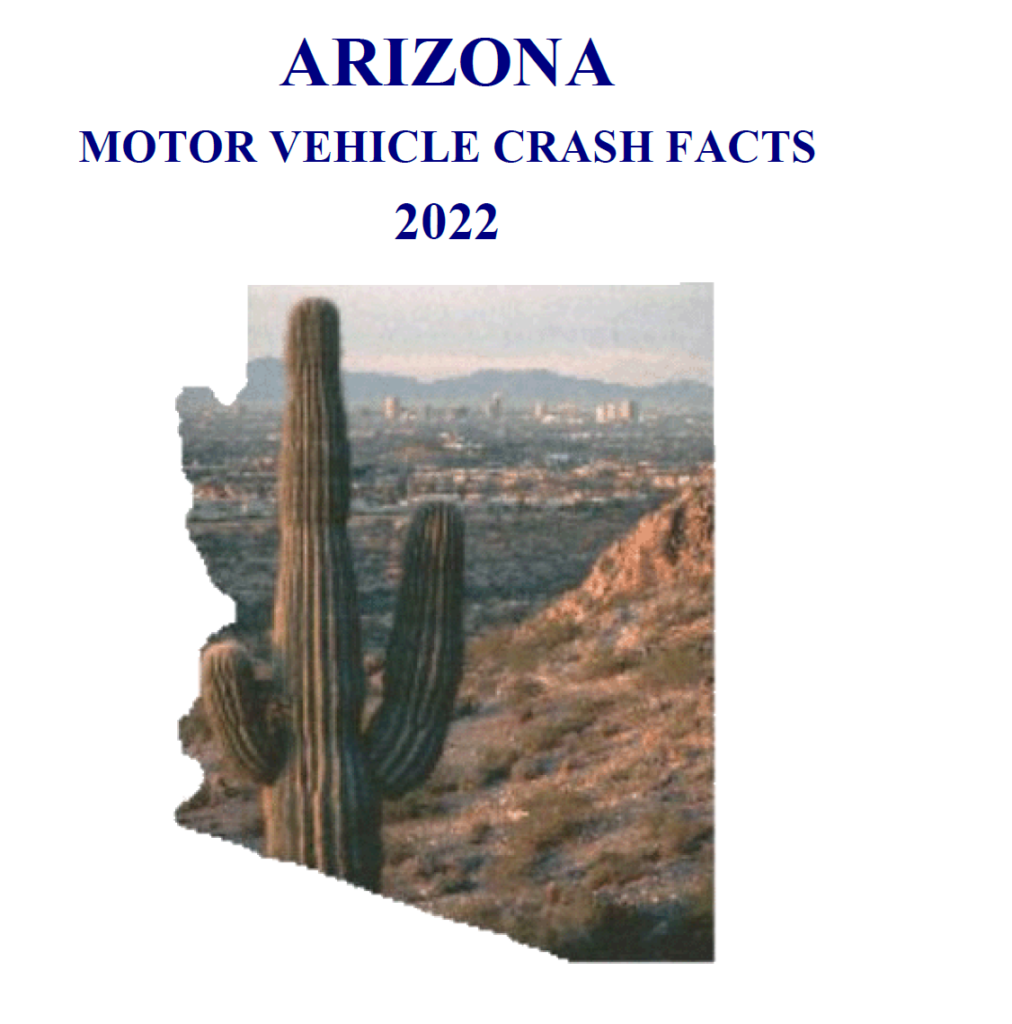
ADOT’s “2022 Arizona Motor Vehicle Crash Facts” is an annual statistical report analyzing traffic collisions across Arizona during 2022. It compiles data from law enforcement agencies, offering insights into crash characteristics, geographic locations, and contributing factors like alcohol and safety device usage. The report details breakdowns of crashes by severity, time, location, and involved parties such as drivers, passengers, pedestrians, and cyclists. Economic losses resulting from these crashes are also estimated. Furthermore, the document includes historical trend data and comparisons to the previous year, providing a comprehensive overview of motor vehicle incidents in Arizona for 2022.
Based on the 2022 Arizona motor vehicle crash data, several overarching trends are evident.
• Increase in Fatalities and Injuries Despite a Slight Decrease in Total Crashes: While the total number of crashes in Arizona decreased by 1.25% from 2021 to 2022 (from 121,506 to 119,991), both the total number of fatalities and injuries increased. Fatalities rose by 8.56% (from 1,192 to 1,294), and total injuries increased by 1.29% (from 51,744 to 52,411). This indicates that while crashes may be happening slightly less often, they are resulting in more severe outcomes overall.
• Increased Fatality Rate per Vehicle Miles Traveled (VMT): The fatality rate per 100 million VMT increased from 1.62 in 2021 to 1.70 in 2022, a rise of 5.13%. Conversely, the injury rate per 100 million VMT saw a slight decrease of 1.91%. This further emphasizes the trend of crashes becoming more deadly.
• Urban Areas Dominate Total Crashes, but Rural Areas Have a Higher Fatality Rate Proportionally: A significant majority of all crashes (86.32%) occurred in urban areas (103,571), compared to 13.68% in rural areas (16,420). However, while urban crashes accounted for 65.79% of all fatal crashes (775), rural crashes accounted for a disproportionately higher 34.21% of fatal crashes (403).
• Alcohol Involvement Remains a Critical Factor in Fatal Crashes: Alcohol-related crashes constituted 4.57% of all crashes (5,489) but accounted for a substantial 17.15% of all fatal crashes (202 out of 1,178). This highlights the severe consequences of driving under the influence.
• Notable Increases in Vulnerable Road User Fatalities: There were significant increases in fatalities among vulnerable road users in 2022 compared to 2021. Motorcycle operator and passenger fatalities increased by 36.53% (from 167 to 228), pedestrian fatalities increased by 16.15% (from 260 to 302), and bicyclist fatalities increased by 6.67% (from 45 to 48).
• Temporal Patterns in Crashes: The peak day for all crashes was Friday, and the peak hour was 3 PM to 4 PM. For fatal crashes, the peak day was Saturday, and the peak hour was 7 PM to 8 PM. March was the peak month for all crashes, while October was the peak month for fatal crashes. Crashes were most frequent during daylight hours (6:00 a.m. to 6:00 p.m.), accounting for 70.4% of all crashes.
• Collision with Motor Vehicles is the Most Common First Harmful Event: The most frequent type of first harmful event in crashes was a collision with another motor vehicle in transport, accounting for 76.71% of all crashes (92,048 out of 119,991) and 39.05% of fatal crashes (460 out of 1,178).
• Economic Loss Due to Crashes is Significant: Motor vehicle crashes resulted in an estimated $21.294 billion in economic losses to Arizona in 2022. Alcohol-related crashes alone accounted for an estimated $2.835 billion in economic loss.
These trends provide a broad overview of motor vehicle crashes in Arizona during 2022, emphasizing the concerning rise in fatalities and the persistent issues of alcohol-impaired driving and the safety of vulnerable road users.
